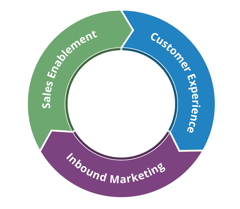When running a marketing department, sales department, or even your own business, it is critical to understand your customer's purchasing decisions and where your unique selling proposition comes into the picture. When you are running a marketing campaign, sales team, or your own business, you want to do two primary things:
1. Increase your sales
2. Make your brand stand out from your competition
There are several options for your consumers, and you need to ensure that your services are what they pick when deciding on a brand, product, or service. To grow your business, you need your sales to increase and build your brand. To do this, you need to consider two things: understanding your consumer's purchase decisions and finding your company's unique selling proposition (USP). Perhaps getting to know your customers and their purchase decisions is easier when they walk into your store and interact with you. It is not as easy to understand your customer's purchasing decisions online because you can't ask them directly, but it is certainly not impossible.
Most people don't know why they need the things they want because our decision-making processes do not follow an absolute rule book. But that doesn't make it impossible to wrap your head around it. Consumer psychology is about understanding the "unconscious territory" that induces the need to purchase things. Once you realize how your customers make purchases and appreciate your most significant selling point, you will have a streamlined marketing strategy with focused goals.
What You Need to Know About USPs
A Unique Selling Proposition (USP) is your business' best selling point that stands out to your customers against what your competitors offer. In the early 1940s, the veteran advertising expert Rosser Reeves of the then-famous Ted Bates & Company came up with this concept. Reeves pointed out that to have a compelling USP, you must make sure your advertisement makes a proposition to your customer that your competitor cannot. It needs to be something that not only grabs the consumer's attention but helps them pick your product/service from a pool of alternatives.
For example, in 2007, Domino's Pizza came out with the slogan, "You Got 30 Minutes!" What's brilliant about this proposition is that they needed to more precisely guarantee delivery in 30 minutes. Still, they gave consumers the idea that they had 30 minutes to spare before enjoying a pizza. They indirectly instilled a sense of anticipation among their consumers. Simply put, this was their USP, something consumers would identify with.
It is unrealistic to say that there is a set formula for coming up with a USP, but here are the basic things you need to consider.
- Identify the leading utility of your product or service and your customer base
- Study your competitor's campaigns and find ways to stand out among them
- Personalize it according to your customer's needs.
This seems easier said than done, but once you've sorted out the basics, it is only a matter of time before you formulate your USP. Once you better understand the consumer's purchase behavior, you can decide on your strong points and further develop an informed USP.
Let's start with the consumer's buying process. The best way to do this is to put yourself in your customer's shoes. Consumers make decisions based on logical factors before they buy your product. And each one of these steps needs to be understood or acknowledged before you pick your USP. According to Marketing Principles, there are six broad phases a consumer goes through in buying a product or a service.
- The consumer recognizes their need that can be provided for by a particular product or service.
- Subsequently, they will search for any information about the product or service that will fulfill their needs.
- The consumer then evaluates the product based on its features according to their requirements.
- The consumer now wants to consider their options before the purchase in terms of available alternative products; how differently are the products priced between brand A and brand B, where they are available, and what is the most convenient way to acquire them. The consumer then makes the purchase.
- The consumer then uses the product or service purchased and forms an opinion about the brand and the product.
- The consumer then disposes of the product/service and perhaps replaces it with a better alternative.
In addition, consumers even share their experiences with their friends and family, which, in turn, influences their purchase decisions.
The Psychology of Purchase Decisions
Studying purchase decisions is central to understanding consumer behavior and building marketing campaigns to grow your business. Every consumer is subject to a vast pool of options, and they need a product or service whose utility is best suited to their needs. They make such decisions in different situations that influence them to purchase. As a business owner or marketer, you need to identify which one of these situations and decisions consumers make about your product. Let's look at the different types of purchase decisions that consumers make:
- Impulse decisions are self-explanatory. When consumers buy something without giving it much thought, they buy it on impulse. This is very unpredictable and not definitively rational.
- Extensive decisions making processes are quite the opposite of impulse purchases. Consumers who want to subscribe to an internet provider will not pick a service randomly. The consumer will choose the best option based on criteria like price or quality of service.
- Routine purchases are made regularly. Your average visit to the grocery store for your milk and eggs is something you can put less thought into, but at the same time, you're not buying on impulse.
- Limited decision-making is when a consumer needs a second opinion or more information before purchasing. In such situations, consumers will look to their friends and family or even influences to make up their minds.
Now that we've covered the basics - formulating a USP by understanding your consumers' purchase decisions- you need to find ways to materialize these into strategies. Here are some pointers about creating your USP based on your understanding of consumer purchase decisions.
- Make sure that your campaigns appeal to the emotions of the consumer. According to the IPA (Institute of Practitioners in Advertising) from the UK, campaigns with emotional content perform twice as well as those ads that follow the rational appeal.
- Get an influencer or a thought leader in your niche to endorse your product or service. Omaze, an organization focused on charities and fundraising for social and economic causes, got Idris Elba, a renowned Hollywood actor, to endorse their fundraising campaign on Valentine's Day. The campaign offered any individual a chance to date the actor by contributing a certain amount of money in a lucky draw.
- You can deliver a better message through your USP if you segment your audience and target them with a specific message. Look at Nike's recent advertisement that portrayed the breaking of tradition by featuring five famous female Arab athletes.
- Adopting humor is a great way to USP to market your product or service. Dan Dennett, philosopher and scientist, in a TED Talk, stated that humor is fundamental in forming positive relationships with your consumers. In the 2016 Super Bowl, Hyundai promoted its tracking feature in a commercial - "First Date," with famous comedian and actor Kevin Hart as a protective dad tracking his daughter who goes on a date. The commercial is noted for its USP, which will help people make positive associations with the car that could lead to purchases.
To sum it up, to grow your business, you need to have perspective and build your marketing campaigns based on your strong points and what drives your customers to make purchases. Several brands are succeeding by doing this, and you can grow your business too!
Need help getting started? We invite you to schedule an inbound marketing consultation where we can discuss your current inbound initiatives, strategy, and even the process you have outlined to make sure it's a success.


.png?width=80&height=80&name=diamond-badge-color%20(1).png)
__Square.png?width=250&height=250&name=Marketing_Hub_(1)__Square.png)




.png?width=250&name=diamond-badge-color%20(1).png)
